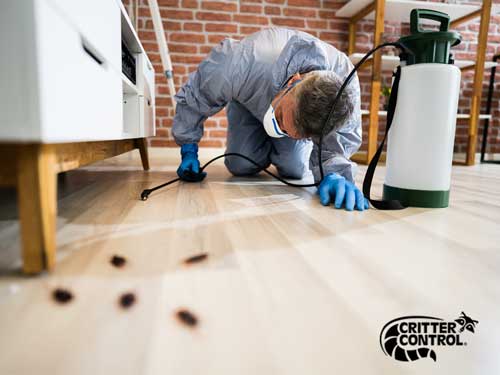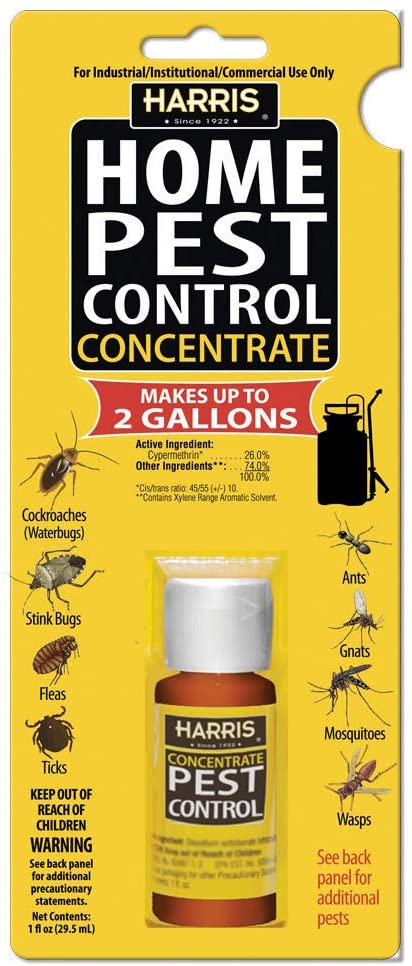Bed Insect Therapy Breakdown: Comparing Chemical Vs. Non-Chemical Solutions
In the world of bug control, especially when managing the consistent issue of bed insects, the selection between chemical and non-chemical therapy services can be a critical one. Both techniques offer unique advantages and downsides, affecting aspects such as efficiency, safety and security considerations, and total expense. By analyzing the nuanced information of each technique, a more clear understanding of which path to pursue in addressing a bed pest invasion can be achieved.
Performance of Chemical Treatments
Chemical therapies for bed pest infestations have actually been extensively identified for their powerful and fast efficiency in getting rid of these pests. When taking into consideration the efficiency of chemical treatments, it is critical to understand that they can offer a detailed and quick remedy to a bed insect trouble.
Moreover, chemical therapies have the benefit of using residual results, meaning that they can proceed to get rid of bed insects also after the first application. This recurring action is specifically helpful in combating any potential re-infestations. Furthermore, the rapid activity of chemical therapies can bring relief to people dealing with severe bed pest infestations, permitting them to gain back control of their home rapidly.
Safety And Security Issues With Chemical Solutions
One essential element that requires cautious consideration when using chemical options for bed bug treatment is making certain the safety and security of passengers and the environment. Direct exposure to certain chemicals used in bed insect treatments can lead to respiratory system concerns, skin inflammation, or other adverse responses, particularly in individuals with pre-existing conditions or level of sensitivities.
Furthermore, the ecological influence of chemical options is one more considerable factor to consider. Some chemicals used in bed pest therapies might be damaging to advantageous pests, wild animals, and communities if they seep right into the dirt or water supply. It is important to use chemical treatments sensibly, adhering to safety and security guidelines, and thinking about much less toxic alternatives to mitigate these risks and make certain the secure and efficient administration of bed pest invasions.
Advantages of Non-Chemical Approaches
Considering the prospective safety and security concerns and environmental impact connected with chemical services for bed pest therapy, discovering non-chemical strategies presents a promising option with numerous unique advantages. Non-chemical therapies are eco pleasant, as they do not add to air or water contamination, making them a sustainable option for parasite control.
Additionally, non-chemical solutions can be reliable in targeting bed bugs, including hard-to-reach areas where chemical treatments may not penetrate. Approaches such as warm treatment, vacuuming, steam cleansing, and cushion encasements supply thorough obliteration without the usage of unsafe chemicals. Moreover, non-chemical approaches can be less disruptive, needing very little preparation and enabling quicker reentry right into treated areas. Overall, going with non-chemical bed pest therapy methods not just focuses on safety and environmental defense however additionally ensures effective and detailed bug control.
Limitations of Non-Chemical Treatments

In addition, non-chemical treatments this page commonly need multiple applications to accomplish successful elimination. This can be taxing and may not always assure full elimination of all bed bugs and their eggs, specifically in hard-to-reach or surprise places.
Moreover, the success of non-chemical treatments greatly relies upon appropriate application and thoroughness, which can be testing for individuals without professional expertise. Poor application of non-chemical approaches may cause incomplete removal, bring about relentless problems and the requirement for extra therapies.
Therefore, while non-chemical treatments have their advantages, it is vital to recognize these restrictions and consider them when figuring out one of the most reliable technique for managing bed insect infestations.
Cost Contrast: Chemical Vs. Non-Chemical Options
Given the restrictions linked with non-chemical treatments, a necessary facet to assess in the context of bed pest administration is the price contrast between chemical and non-chemical choices. Chemical treatments commonly involve the application of pesticides by professionals, which can vary from $250 to $900 per room, relying on the seriousness of the infestation and the size of the area to be dealt with. On the other hand, non-chemical treatments like heat therapy or steam can be extra expensive, with expenses ranging from $1,000 to $6,000 for an entire home. While the preliminary cost of chemical therapies may seem lower, multiple therapies might be called for to totally eradicate the infestation, potentially boosting the overall expense. On the various other hand, non-chemical alternatives might give a much more lasting and environment-friendly option, although they can be cost-prohibitive for some individuals. Ultimately, when thinking about the price of bed insect therapy alternatives, it is essential to weigh the ahead of time expenses against the efficiency and long-term other sustainability of the picked approach.
Final Thought

Taking into consideration the prospective safety and security concerns and ecological influence linked with chemical services for bed pest treatment, exploring non-chemical approaches presents an appealing choice with a number of unique advantages.Offered the restrictions connected with non-chemical treatments, an essential facet to review in the context of bed insect management is the cost contrast between chemical and non-chemical alternatives. In contrast, non-chemical therapies like warmth treatment or vapor can be more costly, with costs ranging from $1,000 to $6,000 for a whole home. While the initial cost of chemical therapies might appear lower, several therapies might be required to completely remove the problem, possibly boosting the overall expense.In verdict, when comparing chemical and non-chemical bed pest therapy alternatives, it is important to think about efficiency, security, advantages, limitations, and cost.